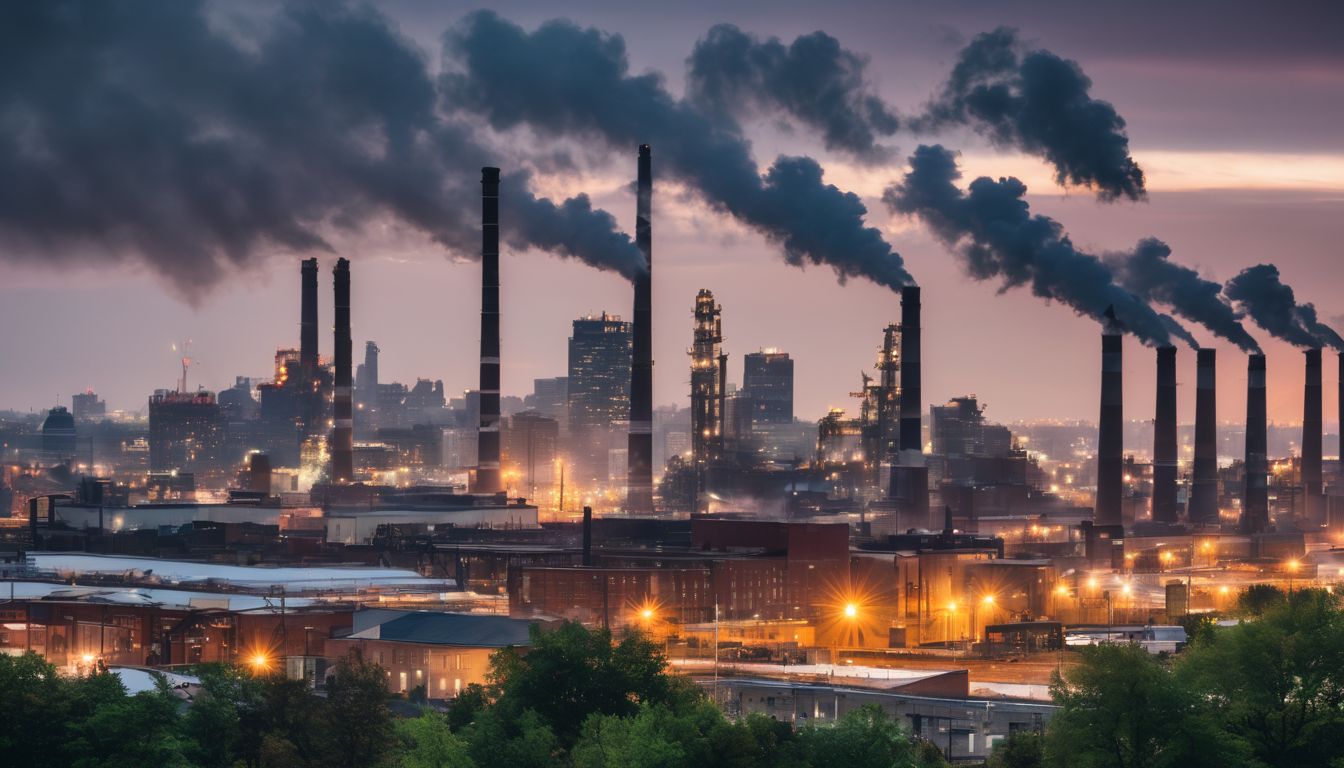Nunavut is the largest, newest, and most northerly territory in Canada. Much of Nunavut is considered arctic territory. With its bitter temperatures, Nunavut is both the least populous and the largest in area of the provinces and territories of Canada. It has a population of 31,906, mostly native Inuit (77% in 2006),1 spread over an area the size of Western Europe.2 Nunavut also has the great honor of being home to the community of Alert—the northernmost permanently inhabited place in the world!3 As one might expect, living conditions in Nunavut are harsh. Unfortunately, climate change has the potential to make living in Nunavut even harder.
This article is one of a multipart series about climate change throughout the Canadian provinces—climate change throughout regions of the United States.
Nunavut, Canada Climate Overview
First time visitors to Nunavut should prepare well. Nunavut is in the Arctic, and is therefore much colder on average than most of the populated regions of the world. “The average temperature in Kugluktuk is the warmest in Nunavut, sometimes rising to 30°C in the summer and ranging from -15°C to -40°C in the winter. The coldest community in Nunavut is Grise Fiord, where summer temperatures can sometimes rise above freezing to 5°C and winter temperatures frequently drop to -50°C.”6
If you can withstand the cold, however, Nunavut has some spectacular sights to offer. To begin with, the province is an amazingly vast expanse of pristine wilderness, with one person for every 65 kilometers of arctic wonderland.7 Nunavut is at the top of the world, and glaciers can be seen beneath the vivid dancing hues of the Aurora Borealis. The traditional Inuit way of life that continues to thrive in the region is to embrace the harsh territory. Native people were primarily nomadic hunters and gatherers, and many Inuit maintain traditions that continue to tie them to the land.8
Climate Change in Nunavut
As Nunavut Premier Eva Aariak recently stated, “Climate change is very much upon us [in Nunavut]… It is affecting our hunters, the animals, the thinning of the ice is a big concern, as well as erosion from permafrost melting.”10 According to the UN’s Intergovernmental Panel on Climate Change, the region is warming about twice as fast as the global average.11 Ice in the Arctic is estimated to have thinned by varying degrees, some sources saying only 10% while others claiming closer to by nearly 40% in the last 30 years.12
Melting Permafrost13
In fact, the changes in Nunavut are so pronounced that The Government of Nunavut Department of Environment has developed the Nunavut Climate Change Centre (NCCC), an online climate change resource center that provides current climate change information relevant to native Inuit. The NCCC website allows people to share their personal experience dealing with a changing climate. Ultimately the government hopes that this will become a popular resource for communicating and disseminating climate change impacts on Nunavut.14
People living in Nunavut share their climate change experience via a community map.15
These are just a few words of Nunavummiut witnessing and experiencing the changes in their climate:16
- “Things have changed so much it is hard to rely on what you knew traditionally anymore. What happened years ago is different than what it is today.” –Baker Lake
- “Most of the areas that we use for our travel are not as useable…due to the lack of snow, they are not really navigable. It has really affected some of the hunters as the lack of snow is hindering the harvesting.” –Iqaluit
- “…while weather is more uncertain and unpredictable these days, hila will continue to change and so people will have to go along with the weather….People will adapt, but this will not be easy for the Inuit who have long depended on their observations of the weather to survive.” –Kugluktuk
The Future of Nunavut
Continuing rapid climate change could have serious consequences for Nunavut, including:17
- “General increases in temperatures (by 5°C to 7°C in the next 100 years) with shorter winters, more rain and more extreme weather; • Disappearance of over one-half of existing permafrost;
- Flooding of coastal areas as a result of the rising sea levels;
- Loss of glaciers and possibly all permanent sea ice;
- Introduction of new diseases; and
- caribou; and
- Introduction of new species.”
In order to help stave off the worst of these effects, Nunavut, like many nations across the globe, is trying to reduce solar power given the region’s summer days with 24 hours of sunlight!18
In addition to investigating renewable energy, a main focus for Nunavut is promoting adaptation to the new conditions that have come with climate change. This means adjusting planning, decisions, and activities for the expected impacts of climate change. The Department of the Environment has created a plan to track the impacts of climate change on the territory and develop strategies and materials to communicate those impacts. Their strategy also outlines extensive outreach objectives for the territory aiming to increase awareness. To advance knowledge of impacts and possible adaptation strategies, the strategy calls for Inuit “Qaujimajatuqangit”—sharing of Inuit traditional knowledge—and “Pillimmaksaniq”—community involvement.19 Consultations will take place in every Nunavut community, and so far more than interviews have been conducted.20 As Arctic activist Sheila Watt-Cloutier stated, Northern Indigenous peoples will be key to this movement:
Northern Indigenous peoples – Inuit and First Nations alike – are the ground truthers of the global environment of change, and for decades now, we’ve been the one to experience these changes first hand. For us, these are not just environmental issues – they are first and foremost about the health of individuals, families, communities, environment and wildlife. Every level of the governance system in the north has to be mobilized to ensure Indigenous knowledge and wisdom is the foundation of all sustainable economic endeavours.21
Nunavut’s tackling of climate change is imperative for the survival of its people, wildlife, culture, and environment. Their success will certainly have an impact that goes beyond the territory itself. The rest of the planet will hopefully be able to learn great lessons from Nunavut and their work to combat climate change.




